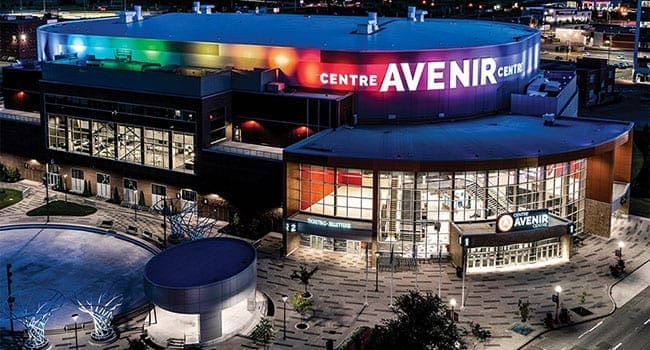 If there’s anything special about the much-ballyhooed Moncton Miracle, it’s that this New Brunswick city manages to thrive despite itself.
If there’s anything special about the much-ballyhooed Moncton Miracle, it’s that this New Brunswick city manages to thrive despite itself.
That could be said about almost all successful municipalities, of course. But one look at this community’s downtown core five years ago and you would not have detected anything remotely resembling gritty determination.
Look anywhere in downtown Moncton today and it’s hard to escape the impression that a commercial renaissance is underway. New buildings and construction cranes pierce the sky like so many pillars of prosperity.
There’s the new events complex Avenir Centre, built for over $100 million and opened a year ago on Main Street. To the west of it, at the old CN railway yards site, the Junction Urban Village development rises to beckon business and residential tenants, alike.
To the east, a new Hyatt is nearly complete. Another hotel is proposed for the corner of Main and Harper streets. Then there’s the commercial and residential development FiveFive Queen, and a new surgical suite slated for the Dr. Georges-L.-Dumont University Hospital Centre.
Altogether, these projects will help the city’s construction sector expand by 2.7 per cent this year and 2.2 per cent in 2020, reports the Conference Board of Canada’s Winter 2019 Outlook on Moncton. That’s after the industry’s output rose by an average of 13.4 per cent annually over 2016 and 2017 and by an additional 13.8 per cent last year.
And while Statistics Canada data shows that New Brunswick was the only province or territory in the country to witness a drop in its population between 2011 and 2016, Moncton’s head count rose by an average of 1.4 per cent a year – a rate it’s expected to maintain in each of the next two years.
During this period, household incomes and retail sales – buoyed by diverse white-collar jobs – are forecast to grow by between two and three per cent, and three and 3.5 per cent, respectively.
Not long ago, Mayor Dawn Arnold told the CBC, “We need to be intentional about that development. We need to have a plan so that things work together. We need more people living in our downtown.”
Naturally, this is not the first time civic engineers and other assorted boosters have talked gamely about a downtown renewal within a broader economic development context.
The fundamental problem, however, has had less to do with money and resources to get the job done than with a persistent, if not pervasive, ambivalence among some segments of city society.
Even the late Canadian business icon Reuben Cohen was a quiet skeptic.
“I was born on top of a pool room in a cold-water flat on Main Street,” Cohen told me a few years before his death, at 93, in 2014. “My father owned a grocery store next door to it. My mother would take me to Sunbeam bakery to buy cream puffs at five cents a pop. That was amazing. The big-wigs in the city would always head downtown to get their daily shaves at the barbershop. That was, I believe, 15 cents a pop.”
Still, he averred, “You can’t compare one time with another. You can’t compare an age when the only commercial games in town were, in fact, located downtown, with an age when cars and trucks take so many people so far away for their shopping and eating. That’s just the way things happen.”
Discussions about downtown cores always provoke existential debate. Should they cater primarily to pedestrians or drivers? How much and what type of parking should be available? Who constitutes the target market: businesses and office workers or cultural organizations and urban dwellers?
In fact, healthy, thriving downtowns typically accommodate all modes of life, work and transportation. That’s the essential challenge of crafting a city’s personality beyond the big box stores, shopping plazas, strip malls and triple-lane expressways that make the outskirts of Fargo, N.D. – visually, at any rate – no different than Halifax, St. John’s or even Moncton.
All of which may only mean that this town still manages to thrive despite the odds and itself.
Alec Bruce is a Halifax journalist who writes about business, politics and social issues, and editor of Troy Media Partner news site The Bluenose Bulletin.
The views, opinions and positions expressed by columnists and contributors are the author’s alone. They do not inherently or expressly reflect the views, opinions and/or positions of our publication.

